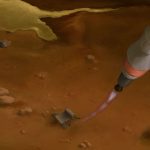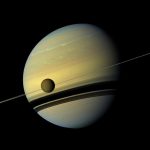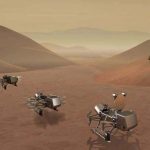Spooky Discovery on Mars Looks Just Like an Alien Doorway0
- From Around the Web, Space
- May 20, 2022
The surface of Saturn’s moon Titan looks a bit like Earth and a new study finally explains why.

The surface of Saturn’s moon Titan looks a bit like Earth and a new study finally explains why.

Funded by a $125,000 grant from the NASA Innovative Advanced Concepts (NIAC) program, engineers and scientists are exploring a possible future mission to return samples from Saturn’s large moon Titan.

The sub could be ready to launch in the 2030s, researchers said.

New theory about the gas giant’s largest satellite may solve a 20-year-old mystery

Titan, with its methane seas and orange smog, is in some ways the most similar world to Earth that we have found.

Scientists on Monday unveiled the first global geological map of Saturn’s moon Titan including vast plains and dunes of frozen organic material and lakes of liquid methane, illuminating an exotic world considered a strong candidate in the search for life beyond Earth.

Small methane-filled lakes on the surface of Titan were likely formed by explosive, pressurized nitrogen just under the hazy moon’s surface, according to a new analysis of radar data from NASA’s Cassini spacecraft.

NASA plans to send a drone named Dragonfly to Saturn’s biggest moon, Titan, the agency said Thursday, announcing the space agency’s latest high-profile mission to explore the solar system for clues on humanity’s origins. “Today I am proud to announce that our next New Frontiers mission, Dragonfly, will explore Saturn’s largest moon, Titan,” NASA administrator Jim Bridenstine said in a video teleconference.

A new $850 million drone-like lander will be venturing on to (and above) the surface of Saturn’s enigmatic moon.

The frigid lakeshores of Saturn’s moon Titan might be encrusted with strange, unearthly minerals, according to new research being presented here.